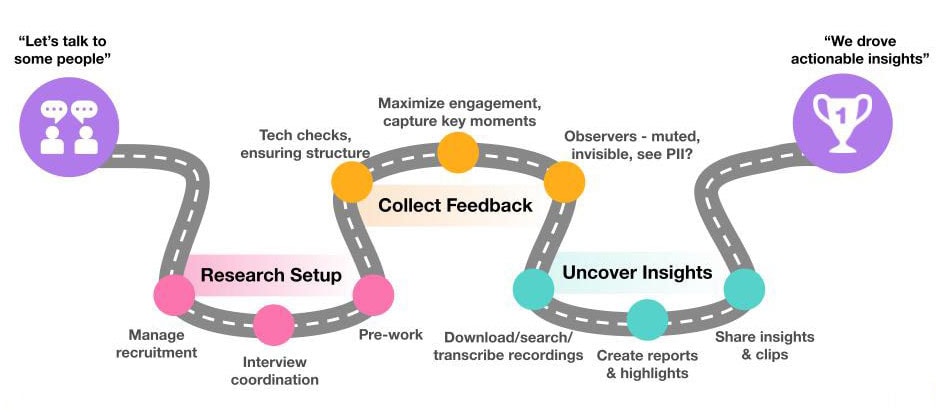How can you leverage customer feedback to improve your brand perception?
To help you leverage customer feedback to improve your brand perception, we asked business owners and marketing experts this question for their best insights. From incorporating feedback into weekly newsletters to turning customers into the heroes of your brand, there are several ideas that may help you use customer feedback to drive your brand perception in the future.
Here are 10 ways to improve your brand perception with customer feedback:
- Get Feedback from Your Competitors’ Customers
- Incorporate Feedback into Weekly Newsletters
- Make It About Them, Not You
- Build SEO from Common Words in Reviews
- Weave Feedback into an Advertising Campaign
- Use Surveys to Drive Change
- Run a Referral Program
- Identify the Perception of Your Brand
- Group Customer Experiences as Either Reactive or Proactive
- Turn Customers into the Heroes of Your Brand
Get Feedback from Your Competitors’ Customers
“To understand how to stay ahead of the competition, you need to listen to perceptions of not only your customers, but your competitors’ customers. How can you do this? While surveys have been the standard for the last 60 years, today more brands rely on live conversations in tandem with surveys or polls or even social media listening to gain richer insights and get more robust context for actionable insights. These live conversations send a positive message to consumers that you are a brand that cares and empathizes with them. Oftentimes, consumers who participate in live feedback conversations tell their friends about it and then relay it as a positive experience, thus becoming brand ambassadors.”
-Jim Longo, Discuss
Incorporate Feedback into Weekly Newsletters
“Incorporate customer feedback into your weekly newsletter. If your customers have been requesting new products, let them know in your newsletter that you’ve not only heard their recommendations but that you’re acting on them as well. Allow your newsletter subscribers to be the first to know about product launches and give them exclusive access before the general public. This will increase your brand perception because your addressable target market knows that you truly care about their input.”
–Katie Lyon, Allegiance Flag Supply
Make It About Them, Not You
“An efficient feedback loop helps the customer and business alike, but most companies still emphasize their side of things. Instead of asking ‘How did we perform?’ It’s better to ask, ‘How could we help you better?’ Although the expected answer might be the same, the reception is vastly different. Asking about your company’s performance is more formal and indirect than it should be, leaving the impression that a third party is involved. Asking ‘How could we help you better?’ puts the customer’s needs in the center and encourages even more comments.”
–Michael Sena, SENACEA
To learn how to better understand customers beyond just surveys and ratings, see our post, “Beyond NPS: Understanding Customer Perception with Qualitative Research.”
Build SEO from Common Words in Reviews
“One way to utilize customer feedback and reviews to improve your company’s profile is to look for common keywords used throughout reviews and then leverage them to optimize your marketing and SEO efforts. Finding relevant keywords to target can be a difficult task, so utilizing reviews from your customers and building patterns from them is an immense help. Once you know what your customers want, refocus your marketing and reach more people.”
-Kate Lipman, embrace Scar Therapy
Weave Feedback into an Advertising Campaign
“Integrate customer feedback into an advertising campaign. For example, if your customers love to use your product while they’re at the beach, create a marketing campaign that takes place in that environment. For this particular scenario, explain why your product is great to use at the beach as told by your current customers. You’ll be surprised at the response rate and the increase in your brand perception.”
-Melanie Bedwell, Olipop
Use Surveys to Drive Change
“We deployed visitor surveys to understand what perception website visitors/prospects had and asked the same questions to our customers.Through these surveys, we learned that there was a clear disparity in our messaging. As a result, we changed the website copy according to what visitors were looking for and matched it with the needs from our customers. Using their words to tell our story, we noticed a 27% uptick in our conversion rate.”
-Muhammad Saad Khan, Cloudways
Discuss supports unmoderated, short form customer feedback that can easily be added to any customer survey. To add color and context to written surveys by leveraging customer-driven feedback, see our Self Captures use case guide.
Run a Referral Program
“Trade unique benefits for consumer data. This creates two-way feedback for your business to leverage the benefits your customers are looking for with valuable market reach for your business. We run a referral program, encouraging our customers to refer a friend for $15 each. The program requires an in-depth contact sheet and sign-up membership through our site but promises a personal code for 20% off all our products and a 10% off code for referrals through that particular customer. Using customer feedback to create referrers that will attract a larger following to your brand is akin to a digital ‘word-of-mouth’ approach. You extend your reach, and your customers double down on satisfaction ratings and referral perks.”
–James Shalhoub, Finn
Identify the Perception of Your Brand
“A brand’s perception is the sum total of the feelings and impressions that are held in the memory of its customers. In the customer’s mind, a brand’s associations may be positive, negative, or a mixture of both — when a strong negative association is identified it is important that the association is addressed in the strategy of the brand, while making sure that positive associations become a key part of the brand’s value proposition.”
-Richard Morgan, Cyclone Computers
Group Customer Experiences as Either Reactive or Proactive
“When thinking about customer experience I tend to group it into two categories: reactive and proactive. The reactive part is better known, as it revolves around providing customers with efficient and timely support whenever an issue arises. The proactive part is a bit more tricky, but in my mind more rewarding. At its core, it involves predicting customer needs and desires and engaging them in different ways to meet them. This isn’t just about technical needs, but more importantly human needs — the need to feel like part of a community, the need to connect with others, etc. When these human needs are met, that’s when you see true customer loyalty.”
-Andreyana Kulina, Brosix
Turn Customers into the Heroes of Your Brand
“Make your customers the hero of your brand story. Storytelling creates an emotional resonance for customers with your product and your brand. But the narrative conveyed must sound genuine to encourage buyers to take action. Every story has a main character (the hero), a conflict (the challenge), and a resolution (how the challenge is overcome). Sharing a relevant customer story also helps leads better understand how your product benefits them as they see how clients with similar challenges achieved success with your solution.”
–Chris Gadek, AdQuick
To better listen to your customers to improve brand perception, see how the Discuss People Experience Platform can turn your customers’ experiences into insights.





